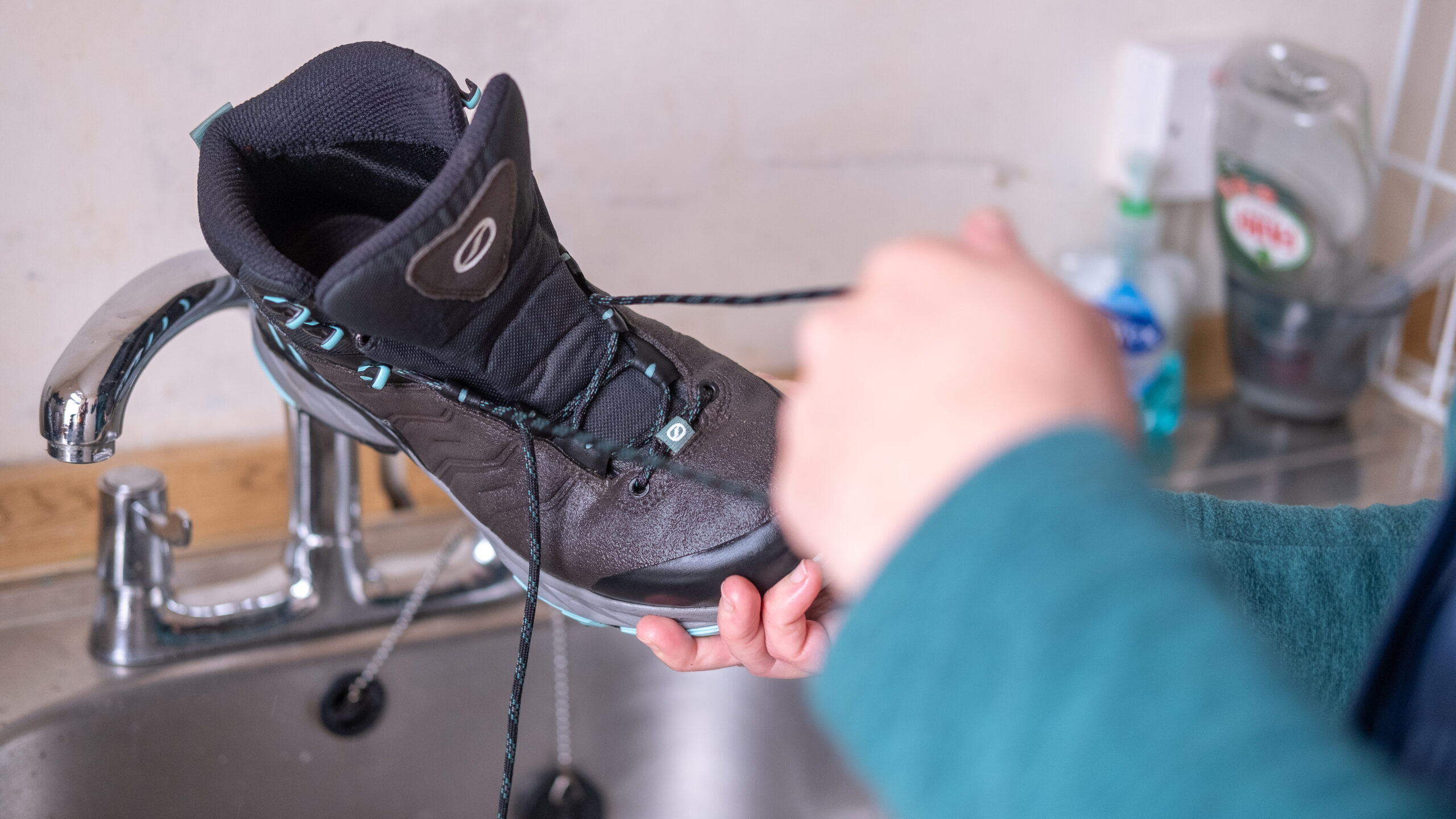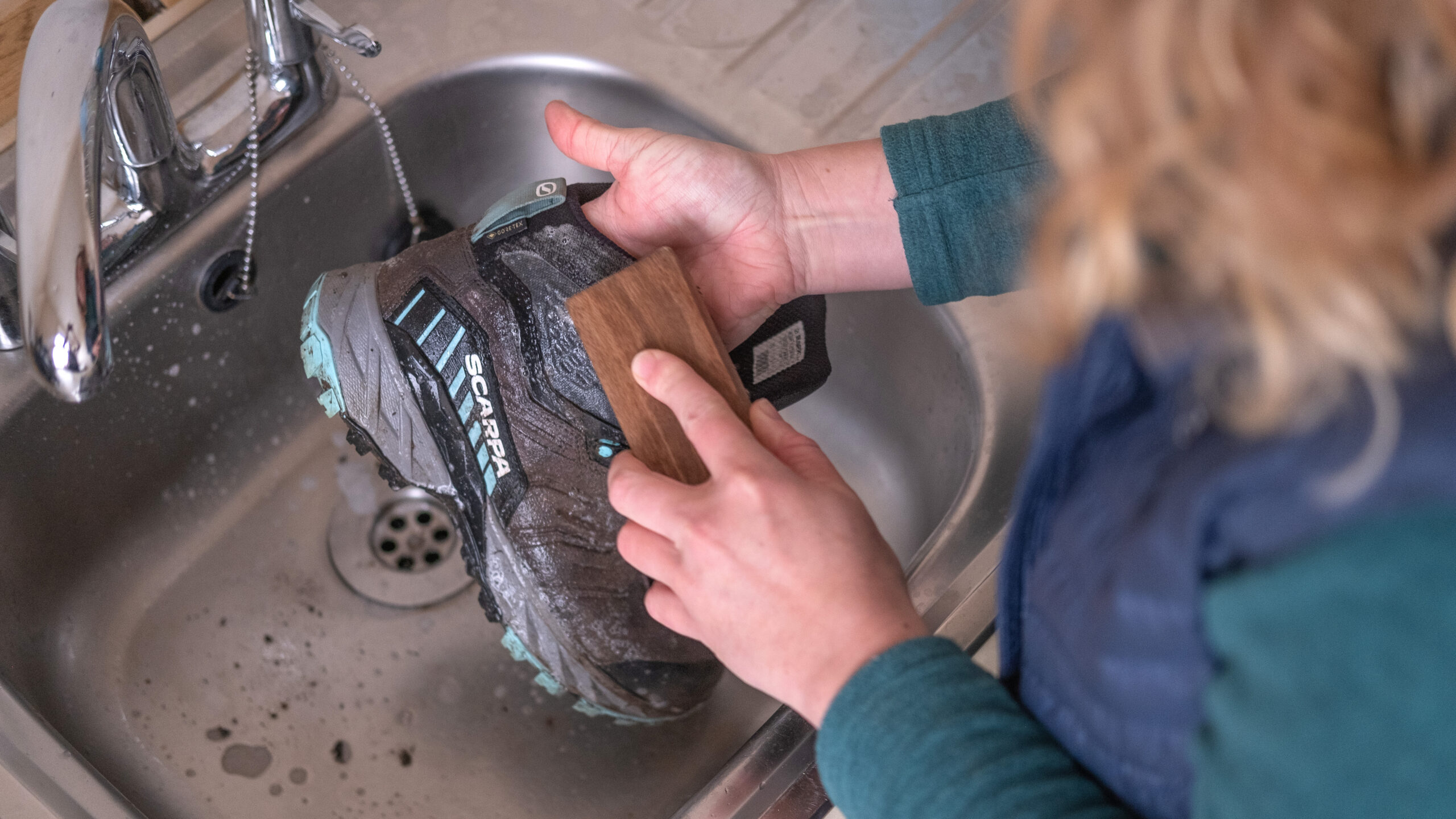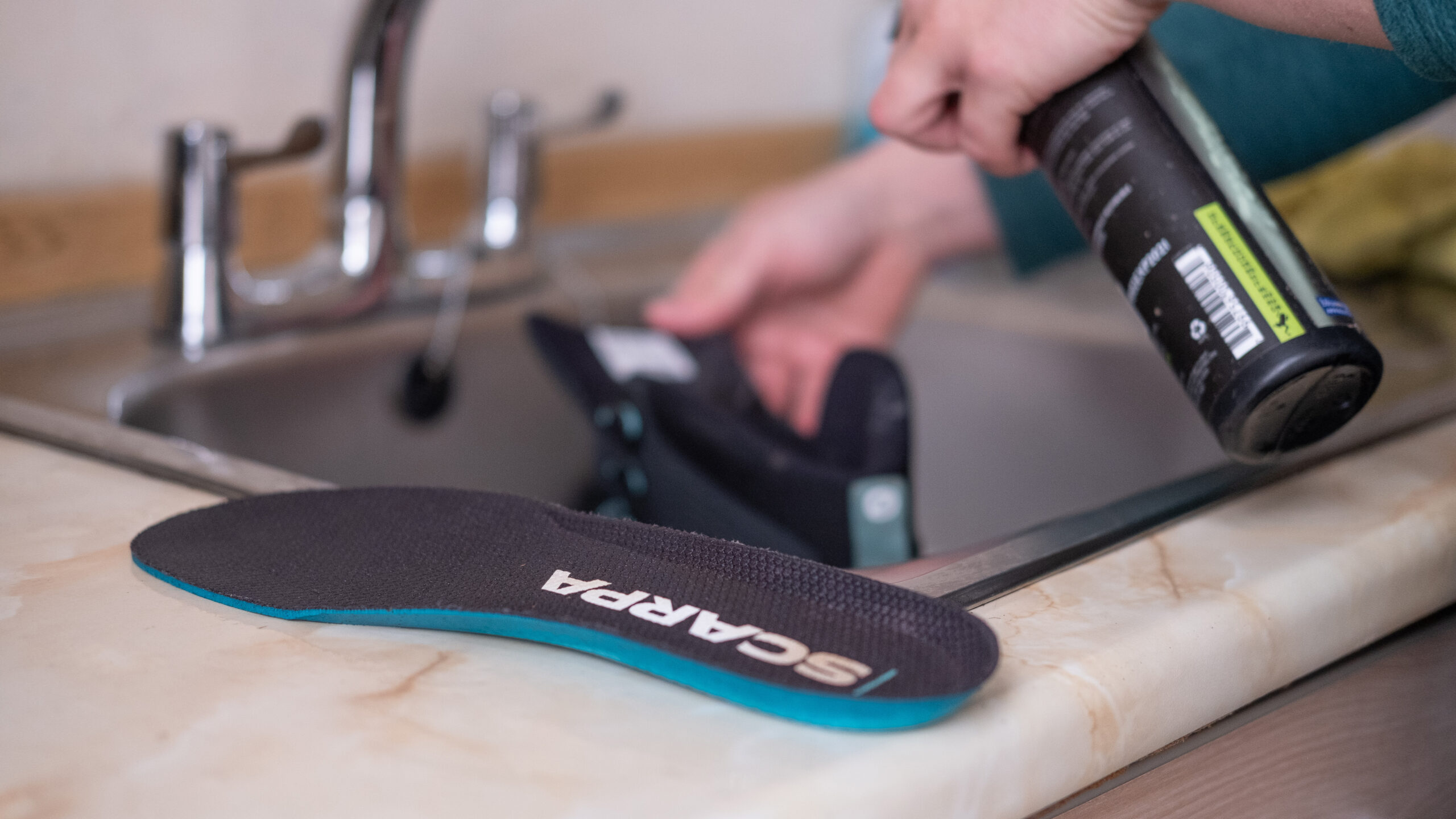The importance of outdoor footwear care
Back in’t day, we were all told that outdoor footwear care was the most important piece of outdoor equipment to get right. A slightly baggy-fitting pair of trousers won’t ruin your day, but a big nasty blister just might.
Or how about the fabric of your boots splitting or the sole coming off?
Now, obviously we can’t tell you that you’ll never have kit failures, however, we can tell you that the likelihood of it happening will be greatly reduced if you’re happy spending some of your time partaking in some general maintenance.
Sounds easy, right? That’s because it is!
Why should you bother?
To put it simply, you wouldn’t buy a Ferrari and never have it serviced. Like a car, kit needs maintenance to perform at its best for as long as possible.
I’m just going to diverge slightly for the purpose of this argument. As an example, your footwear has a ‘DWR’ — a ‘durable water repellent’ coating.
A 20-year-old boot, jacket, etc, most likely would have had a harmful chemical included (Perfluorinated Chemicals, or ‘PFCs’).
Using this harmful chemical, old primitive coatings would have made the garment or shoe extremely resistant to water and general wear and tear, however, they stick around in the environment for longer than we can imagine.
Fast forward to today, harmful chemicals are no longer being used in any of Nikwax or Grangers’ aftercare products and are being gradually phased out of mass production in the outdoor industry.
That being said, these products will only hold up for a certain amount of time and eventually deteriorate and wear off. Their job is to prevent water, mud and general detritus from soaking into the fabrics of your boots or shoes.
Without this coating, the detritus will simply become one with your footwear, making them heavy, soaking wet, clammy and smelly.
Well, what if I told you this could all be prevented by spending some of your well-earned time on your precious boots? You’d do it in a heartbeat I’d hope!
Some House Rules- key guidelines for outdoor footwear care
Following these simple outdoor footwear care rules, you can add years of life to your favorite pair of shoes or boots.
- If they are muddy, wash them! Don’t let dry or damp mud sit on your footwear for long periods of time as it’ll increase rot in the stitching and dry out the fabrics.
- If the outer fabric is wet, air dry only, ideally away from direct sunlight and not next to or on a heat source; this will cause leathers to crack and glues to fail.
- If the boot is wet on the inside , take out the footbed, give your shoes or boots an inch of water inside and very gently clean with Nikwax Footwear Cleaning Gel or Grangers Footwear Cleaner in a small circular motion. Do not use a hard brush as this could damage the inner fabrics or membrane. Fill them with loose balls of newspaper until they are saturated — keep repeating until dry.
- If you notice that your outer footwear is no longer repelling water or the leather is looking dry, it’s time for a deep clean and reproof.
How to Wash Fabric & Leather Footwear
1. Remove loose dirt and debris from the outer by rinsing with cool water.
If it helps, you can remove the laces for easier access to the intricate crevices of your footwear. 
2. Grab your footwear cleaner (don’t use washing up liquid, Nikwax Footwear Cleaning Gel or Grangers Footwear Cleaner both work) and apply it to the outer of your footwear.
Use a nylon brush (a nail brush is ideal!) to work the cleaner into the fabrics.
Do the same for the sole unit but be prepared for some splash back!

3. Whip out the footbed, fill the boot with around an inch of water and carefully clean the inner fabrics with the same Nikwax or Grangers products.
Don’t use any tough brushes here as it could damage the inner fabrics or worse,
the membrane of your boot if it has one. 
4. Allow to air-dry — this means no radiators, fires, tumble driers or forced drying.
Loosely scrunch up pieces of newspaper and place inside the boots if you want to speed up the process; just don’t squeeze them in there too tightly as it could distort your boots while they’re wet and pliable.
Outdoor footwear care: Inspection Time
Okay, now it’s time to determine whether you need to reproof your boots or not.
Once dry, pour a little water on the uppers. Is it beading off nicely or is it simply sinking into the fabric?
If the latter is true, you’ll need to follow the below. In the case of leather footwear, if the leather is looking a little dry, you’ll also need to read on. If not, you’re good to go.
Reproofing Your Footwear (Fabric)
1. Dampen your footwear again. Yes, I know this sounds counterintuitive, but trust me.
2. Use either Grangers Performance Repel+ or Nikwax Fabric and Leather Proof and follow the instructions on the bottle. More often than not, it’s just a matter of applying, leaving a few moments and wiping off the excess. Same as waxing a car.
3. Leave to dry out of direct sunlight. Done.
Reproofing Your Footwear (Leather)
1. Are the uppers dry and faded? If so, you’ll have to repeat this step a few times.
2. Here we’ll be using Grangers G-Wax — this is ideal for those looking for a traditional method. Apply a small amount of wax with a clean cloth, or if you prefer, you can use your fingertips; this helps to warm the product and makes it easier to apply to dry boots. Rub in circular motions until it sinks in.
3. Repeat if necessary. By ‘necessary’, we mean if the leather still looks dry. Ideally, your boots will need 2 – 3 layers worth to help soak up the goodness from the beeswax. If it’s darker and glossier than before, the chances are it’s good to go.
4. Leave to dry out of direct sunlight.
Reproofing Your Footwear (Nubuck & Suede)
- Dampen your footwear and apply Nikwax Nubuck and Suede Proof.
- To do this, pop the lid off, press the sponge applicator down to break the seal and rub it onto the uppers of your footwear. If you forget, it’s on the back of the bottle. You can also use the Granger’s Repel+ if you’d prefer a spray.
- Leave a few minutes and wipe off the excess.
- Leave to dry out of direct sunlight.
Outdoor footwear care plays vital role in our outdoor pursuit. We underlined the significance of maintaining your outdoor footwear and offers insight into how little effort can prevent potential kit failures
Nobody likes having stinky shoes: Granger’s Odour Eliminator does just that.

Leave a Reply